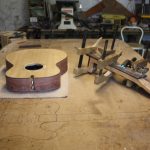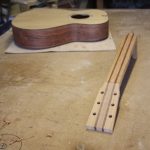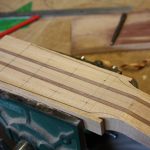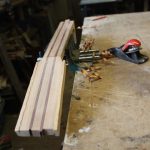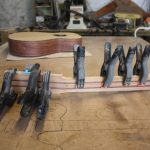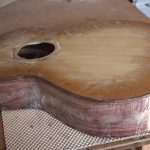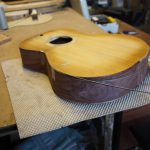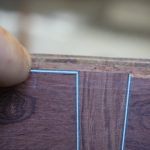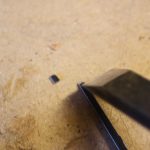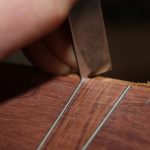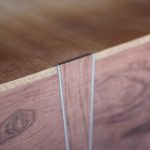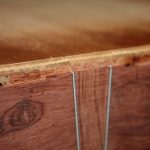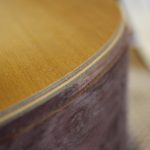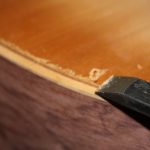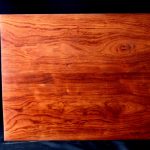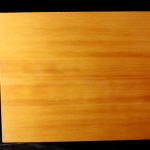Making a new custom guitar from the oldest workable wood in the world!
- The fretboard is glued on and left to dry
- The neck is now ready for the fretboard to be glued
- The headstock is marked out with a pencil
- The extra pieces are planed level to the face of the headstock
- The fillet is glued over the truss rod to hold it in place. Also wings are glued on to make the headstock wide enough
- Clear sticky tape holds the binding in place while the glue dries
- The body is now ready for the binding to be glued on
- making a perfect join in the BWB
- an angle is cut onto the end of the strip to be fitted
- A chisel cuts a mitre into the black white black binding strips
- The tail piece end graft was fitted last time
- The end graft sticks up slightly…
- An angle is cut onto the end of the strip to be fitted
- The binding channel is cut, a chisel cleans up the furry edge
- Rosewood was used for the back and sides
- The Ancient Kauri soundboard
Sandy was kind enough to provide a link to this web page for more info about ancient Kauri. It is really amazing to be using the oldest workable wood in the world. To think that this tree was alive so long ago- before human civilisation really began…it is fascinating.
But I have always had a fascination with wood and would also like to think that I have a natural affinity for it which I try to apply to my instrument making. Making guitars by hand gives me time to get to know each piece individually and intimately as I am striving to get the very best out of every part of the instrument.
A Confession:
I always smell a piece of wood before I use it…I guess there is a word for people like me. (Yes I just googled….its xylophile: one who loves wood.)
When I was young I heard about old craftsman folk who can identify any wood species by smell alone…I wouldn’t say I was that good but I can certainly recognise a few and understand how it could be true as each species releases its own distinctive aroma while it is being worked. My all time favourite is antique Brazilian rosewood which is just gorgeous…like cherries and chocolate. Indian rosewood is similar but not as nice. Walnut and cedar are particularly distinctive.
The Ancient Kauri smells kind of like cedar to me but I must admit the first time I smelled it, I thought I caught faint whiff of abalone which also comes from New Zealand, so that would make sense. Is that what NZ smells like?
I should say here that sniffing wood is not good for you generally- some woods are carcinogenic (will give you cancer) and a dust mask should be worn at all times when working with any material that creates dust.
No harm in a quick sniff though….
As far as workability of the wood goes…no problems there. Works just as well as any other wood I would use for the soundboard.
It produces a strong powerful tap tone now the body is together…we’ll have to wait and see what it sounds like with the strings on…

